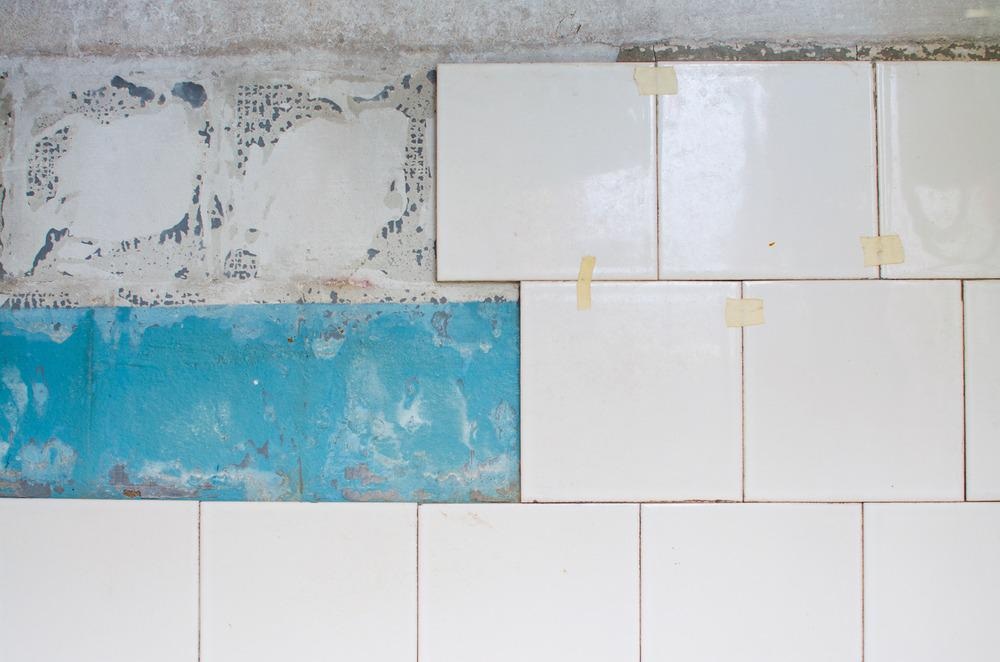Concrete aggregate material made from ceramic waste is a ready solution for material shortages in the construction industry. It can also help building projects minimize their environmental footprint. At present, ceramic waste use is limited in the construction industry due to a lack of understanding. In fact, ceramic waste matches or can improve the performance of other common aggregates used for concrete.

Image Credit: Maria Kolpashchikova/Shutterstock.com
Ceramic Tile Waste is a Bountiful Material
The ceramic tile industry necessarily creates a large amount of waste. Brittle ceramic tiles can easily break in production or transit, and the subtractive methods used for making them creates a lot of waste material in the manufacturing process itself.
In 2020, China – the largest manufacturer of ceramic tiles worldwide – produced almost 8.5 billion m2 of tiles. The Indian ceramic industry, another global leader, is estimated to be worth $3.72 billion, producing around 55 million ceramic tiles annually.
But between 8% and 10% of the material used in ceramic tile manufacturing is wasted every day. This is unavoidable with current production methods, as the brittle tiles easily break in production and transit.
Now, the ceramics industry is under pressure to find ways to repurpose this waste usefully, rather than filling up landfill sites and losing the energy and carbon investment in making the tiles in the first place.
Using Ceramic Waste as Coarse Aggregate for Concrete
There is good news for the ceramics industry: repurposed ceramic waste is an ideal candidate material for greener concrete.
It can be used as a full or partial replacement for coarse aggregate in concrete. This reduces the demand for quarried aggregate material, which requires significant amounts of energy use and pollution to extract and process.
In some applications, ceramic waste actually performs better than commonly used aggregate materials.
The sheer quantity of ceramic waste materials combined with their suitability for the purpose makes them well suited for making greener concrete. But there are a number of other factors at play as well.
The high heating temperatures required for making ceramic tiles (sometimes as hot as 2,000 °C) lead to pozzolanic reactivity in the material that makes them particularly durable over a long period of time.
Despite this longevity, the standard ceramic tile is chemically inert and contains no toxic materials or additives.
Crunching the Numbers: Is Ceramic Tile Waste a Good Candidate for Concrete Aggregate?
Recently, civil engineering researchers working at Kongu Engineering College, India, carried out a study to determine in concrete terms whether or not ceramic tile waste is an appropriate candidate for repurposing as an aggregate material.
The study focused on the properties of concrete made with ceramic tile waste aggregate and found that using aggregates like this could lower the cost of construction projects without making sacrifices on the building’s structural performance.
The team employed both destructive and non-destructive testing methods to compare the compressive and split tensile strengths of concrete made with various amounts of ceramic tile waste aggregate in the mixture.
They also carried out a cost-benefit analysis to find out if utilizing waste ceramic tiles as aggregate was commercially feasible.
The study found that ceramic tile waste is a good alternative to standard coarse aggregate for concrete. It has lower specific gravity and a greater absorption ratio than quarried aggregate, which is beneficial for some applications.
Ceramic tile waste was also examined as a potential sand substitute. This was found to lower building costs as well while facilitating the production of durable concrete.
The Construction Industry is Waking Up to its Waste Problem
This research is part of a growing movement among academics and industry leaders to make the construction industry deal with its waste problem effectively.
Construction and demolition waste is produced in nearly every construction and demolition project undertaken around the world. In the European Union alone, approximately 900 million tons of waste are generated each year.
A literature review from an international, interdisciplinary team of experts on the construction and demolition waste issue was recently published in the journal Materials.
The results of the literature reviewed in the survey were summarized as showing clearly that recycled aggregates from all manners of construction and demolition waste could be successfully used in various construction material applications.
Also, the quality of recycled aggregate material was generally found to be comparable with that of natural aggregates.
The reviewers concluded from their analysis of 163 publications published over 26 years that the use of waste material in new construction is technically feasible, environmental, and facilitates a more environmentally friendly approach to construction waste.
As well as ceramic tile manufacturing, significant amounts of ceramic waste are generated when ceramic tiles are applied on construction sites.
This and other kinds of waste material can be repurposed within the industry as aggregates for sand, pavements, roads, bricks, new ceramics, and other cementitious materials, as well as concrete.
More from AZoBuild: A Closer Look at Mixing Rubber into Concrete
References and Further Reading
Reis, G., et al. (2021). Current Applications of Recycled Aggregates from Construction and Demolition: A Review. Materials. https://www.mdpi.com/1996-1944/14/7/1700.
Suchithra, S., M. Sowmiya, and T. Pavithran (2022). Effect of Ceramic Tile Waste on Strength Parameters of Concrete: A Review. Materials Today: Proceedings. https://www.sciencedirect.com/science/article/pii/S2214785322019617?via%3Dihub
Disclaimer: The views expressed here are those of the author expressed in their private capacity and do not necessarily represent the views of AZoM.com Limited T/A AZoNetwork the owner and operator of this website. This disclaimer forms part of the Terms and conditions of use of this website.